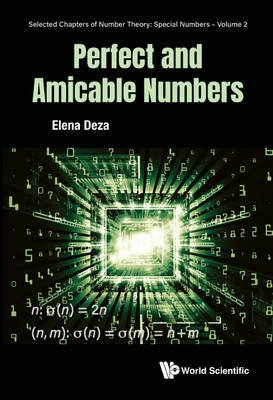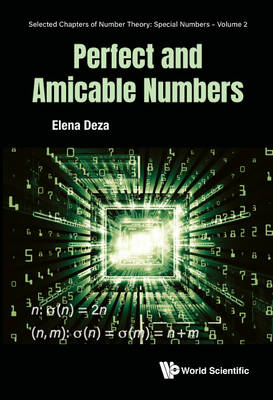
Je cadeautjes zeker op tijd in huis hebben voor de feestdagen? Kom langs in onze winkels en vind het perfecte geschenk!
- Afhalen na 1 uur in een winkel met voorraad
- Gratis thuislevering in België vanaf € 30
- Ruim aanbod met 7 miljoen producten
Je cadeautjes zeker op tijd in huis hebben voor de feestdagen? Kom langs in onze winkels en vind het perfecte geschenk!
- Afhalen na 1 uur in een winkel met voorraad
- Gratis thuislevering in België vanaf € 30
- Ruim aanbod met 7 miljoen producten
Zoeken
Omschrijving
This book contains a detailed presentation on the theory of two classes of special numbers, perfect numbers, and amicable numbers, as well as some of their generalizations. It also gives a large list of their properties, facts and theorems with full proofs. Perfect and amicable numbers, as well as most classes of special numbers, have many interesting properties, including numerous modern and classical applications as well as a long history connected with the names of famous mathematicians.The theory of perfect and amicable numbers is a part of pure Arithmetic, and in particular a part of Divisibility Theory and the Theory of Arithmetical Functions. Thus, for a perfect number n it holds σ(n) = 2n, where σ is the sum-of-divisors function, while for a pair of amicable numbers (n, m) it holds σ(n) = σ(m) = n + m. This is also an important part of the history of prime numbers, since the main formulas that generate perfect numbers and amicable pairs are dependent on the good choice of one or several primes of special form.Nowadays, the theory of perfect and amicable numbers contains many interesting mathematical facts and theorems, alongside many important computer algorithms needed for searching for new large elements of these two famous classes of special numbers.This book contains a list of open problems and numerous questions related to generalizations of the classical case, which provides a broad perspective on the theory of these two classes of special numbers. Perfect and Amicable Numbers can be useful and interesting to both professional and general audiences.
Specificaties
Betrokkenen
- Auteur(s):
- Uitgeverij:
Inhoud
- Aantal bladzijden:
- 464
- Taal:
- Engels
Eigenschappen
- Productcode (EAN):
- 9789811259623
- Verschijningsdatum:
- 7/03/2023
- Uitvoering:
- Hardcover
- Formaat:
- Genaaid
- Afmetingen:
- 152 mm x 229 mm
- Gewicht:
- 784 g

Alleen bij Standaard Boekhandel
+ 451 punten op je klantenkaart van Standaard Boekhandel
Beoordelingen
We publiceren alleen reviews die voldoen aan de voorwaarden voor reviews. Bekijk onze voorwaarden voor reviews.









